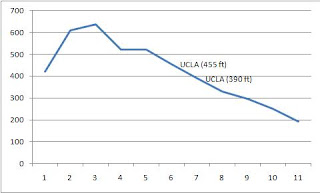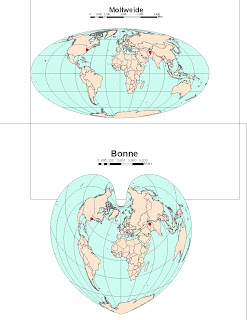1. The name of the quadrangle is Beverly Hills.
2. The adjacent quadrangles are Canoga Park, Van Nuys, Burbank, Topanga, Hollywood, Venice, and Inglewood.
3. The map was first produced in 1966 (and most recently revised in 1999).
4. The datum used was the North American Datum of 1927 and 1983.
5. The scale is 1:24,000
6. a) 5 cm on the map = 1,200 m on the ground.
b) 5 in on the map = 1.894 mi on the ground.
c) 1 mi on the ground = 2.64 in on the map.
d) 3 km on the ground = 12.5 cm on the map
7. The counter interval is 20 ft.
8. a) the Public Affairs Building is at 34.07261 N and 118.43934 W / 34 degrees 4.3566' 21.396'' N and 118 degrees 26.3604' 21.624'' W
b)The tip of the Santa Monica pier is at 34.00743 N and 118.49992 W / 34 degrees .4458' 26.748" N and 118 29.9952 59.712 W
c) the Upper Franklin Canyon Reservoir is at 34.12042 N and 118.41016 W / 34 degrees 702252' 13.512" N and 118 degrees 24.6096' 36.576" W
9. a) the approximate elevation of Greystone Mansion is 560 ft / 170.69 m
b) Woodlawn Cemetary: 140 ft / 42.67 m
c) Crestwood Hills Park: 600 ft /182.88 m
10. The UTM zone is 11S.
11. The UTM coordinates for the lower left corner are around 3762950 and 0361500.
12. 250,000 square meters in each cell of UTM gridlines.
13.





14. The magnetic declination is 14 degrees east.
15. The stream flows south.
16.








 I had a fairly bumpy experience getting through the ArcGIS tutorial. I would not consider myself a "computer person," and being a Mac user thrown into the unknown world of out of date PCs didn't make things easier. I think the most difficult part was navigating Windows, and getting to know how the temporary workspace system worked. I ended up having to do a lot of things over due to improper saving, but it was probably for the better, because it made me more familiar with the software.
I had a fairly bumpy experience getting through the ArcGIS tutorial. I would not consider myself a "computer person," and being a Mac user thrown into the unknown world of out of date PCs didn't make things easier. I think the most difficult part was navigating Windows, and getting to know how the temporary workspace system worked. I ended up having to do a lot of things over due to improper saving, but it was probably for the better, because it made me more familiar with the software.









 ected also relates to my interest in urban patterns. This is a map of the growth of Baltimore, Maryland from 1792 to 1992, constructed by NASA using USGS Landsat data. The map therefore spans the majority of American history, and provides a very interesting view of American urban growth patterns. I think it is amazing that urban sprawl has spread so much that almost all land in this snapshot is covered in the last slide, and that was almost 20 years ago! Visuals like this are very helpful to show people how devastating human development has truly been to our environment. To me, the growing sprawl almost looks like a organism, like a mold spreading across the landscape, and I think in a way, the likeness is very telling.
ected also relates to my interest in urban patterns. This is a map of the growth of Baltimore, Maryland from 1792 to 1992, constructed by NASA using USGS Landsat data. The map therefore spans the majority of American history, and provides a very interesting view of American urban growth patterns. I think it is amazing that urban sprawl has spread so much that almost all land in this snapshot is covered in the last slide, and that was almost 20 years ago! Visuals like this are very helpful to show people how devastating human development has truly been to our environment. To me, the growing sprawl almost looks like a organism, like a mold spreading across the landscape, and I think in a way, the likeness is very telling.